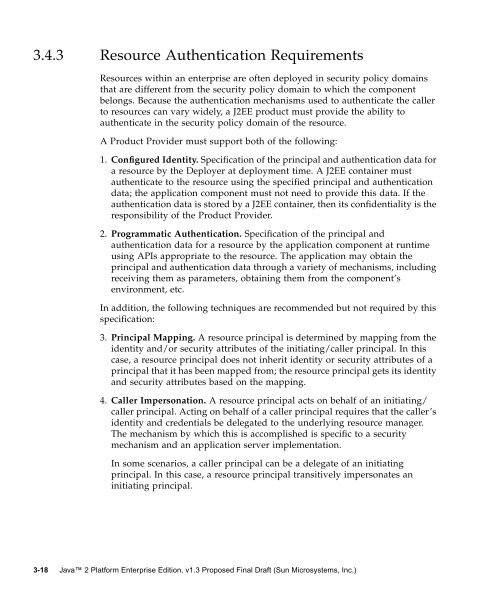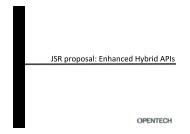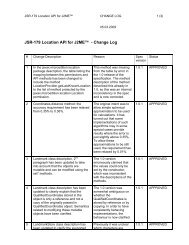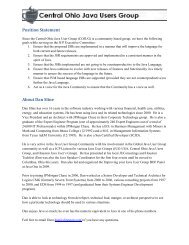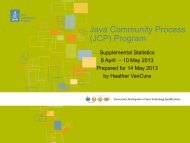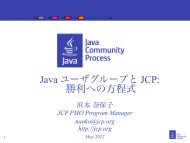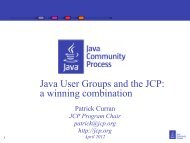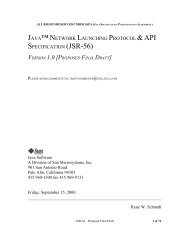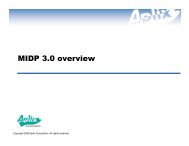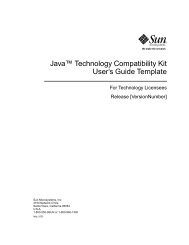JSR-000058 Java TM 2 Platform, Enterprise Edition 1.3 Specification
JSR-000058 Java TM 2 Platform, Enterprise Edition 1.3 Specification
JSR-000058 Java TM 2 Platform, Enterprise Edition 1.3 Specification
You also want an ePaper? Increase the reach of your titles
YUMPU automatically turns print PDFs into web optimized ePapers that Google loves.
3.4.3 Resource Authentication Requirements<br />
Resources within an enterprise are often deployed in security policy domains<br />
that are different from the security policy domain to which the component<br />
belongs. Because the authentication mechanisms used to authenticate the caller<br />
to resources can vary widely, a J2EE product must provide the ability to<br />
authenticate in the security policy domain of the resource.<br />
A Product Provider must support both of the following:<br />
1. Configured Identity. <strong>Specification</strong> of the principal and authentication data for<br />
a resource by the Deployer at deployment time. A J2EE container must<br />
authenticate to the resource using the specified principal and authentication<br />
data; the application component must not need to provide this data. If the<br />
authentication data is stored by a J2EE container, then its confidentiality is the<br />
responsibility of the Product Provider.<br />
2. Programmatic Authentication. <strong>Specification</strong> of the principal and<br />
authentication data for a resource by the application component at runtime<br />
using APIs appropriate to the resource. The application may obtain the<br />
principal and authentication data through a variety of mechanisms, including<br />
receiving them as parameters, obtaining them from the component’s<br />
environment, etc.<br />
In addition, the following techniques are recommended but not required by this<br />
specification:<br />
3. Principal Mapping. A resource principal is determined by mapping from the<br />
identity and/or security attributes of the initiating/caller principal. In this<br />
case, a resource principal does not inherit identity or security attributes of a<br />
principal that it has been mapped from; the resource principal gets its identity<br />
and security attributes based on the mapping.<br />
4. Caller Impersonation. A resource principal acts on behalf of an initiating/<br />
caller principal. Acting on behalf of a caller principal requires that the caller’s<br />
identity and credentials be delegated to the underlying resource manager.<br />
The mechanism by which this is accomplished is specific to a security<br />
mechanism and an application server implementation.<br />
In some scenarios, a caller principal can be a delegate of an initiating<br />
principal. In this case, a resource principal transitively impersonates an<br />
initiating principal.<br />
3-18 <strong>Java</strong> 2 <strong>Platform</strong> <strong>Enterprise</strong> <strong>Edition</strong>, v<strong>1.3</strong> Proposed Final Draft (Sun Microsystems, Inc.)


